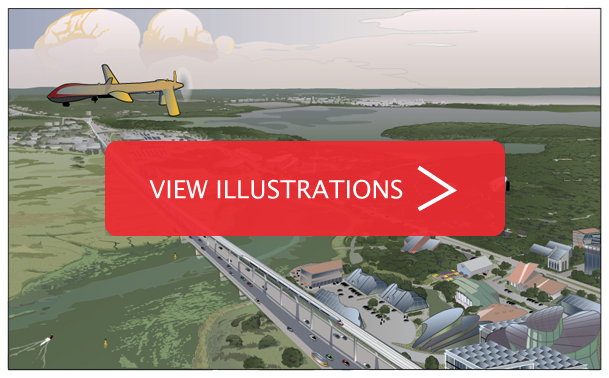

Accelerated Innovation is The Edge E-zine’s series on places at the Innovation Revolution’s front edge. To kick start it, we profile Wisconsin’s Yahara Watershed.
Mid-sentence, Joel Shedden reached for his ear to silence his beeping iMind. “Sorry, my robot is texting me,” he explained. The robot, a Cropbot Harvester, “texted” to alert him that it had finished up for the day and was heading back to the BotBarn. The RoboText App allows Joel to track the robot’s every move, wherever he is. He doesn’t have to be on the farm to keep an eye on things.
Joel owns and manages a clover and legume farm in Dane County, Wisconsin. Although one of the region’s endangered family farms, Shedd Valley Farm is also among the most high-tech. Twenty-five years ago, after completing a Master’s degree in Sustainable Systems Engineering at the University of Wisconsin-Madison, Joel returned home to take over the business and put his technological savvy to use. Within a decade he turned Shedd Valley into one of the Midwest’s leading innovation farms. As early adopters of the stream of agro-technology that has emerged over the past few decades, innovation farms are both the guinea pigs and the pioneers of the agricultural frontier. But 2070 may mark the waning of their competitive edge, now that much of this technology has pervaded standard farm practice.
“The things technology lets us do on the farm today would probably make my grandfather roll over in his grave,” Joel joked. His grandfather, Henry William Shedden Jr., was an advocate of tradition and “quite the Luddite,” according to Joel. All his life, Henry was adamant about preserving the family's livestock business. But he had been reluctant to change with the times, especially toward the end of his life, when times began to change at quickening clip. “I appreciate tradition,” said Joel, “but the advancements we’ve seen in the past few decades have done a lot of good for farmers.”
Joel is not the only Dane County farmer enamored with technology. Agriculture’s swift progress through the Innovation Revolution has reaped more than just crops for farmers. The flood of innovation has greatly reduced the need for fertilizers, pesticides, and intensive irrigation. New planting and harvesting technology awards farmers larger yields in smaller plots. With finely honed precision tools and practices, they can adjust corn, soy, and other cash crops to fit hyperlocal climates and topography. With DIY-GE kits, they can genetically engineer their way out of nearly any ecological pickle. Corn is now nutritionally dense as well as fast-growing. Crops can help the soil build up organic matter or sequester phosphorus. Many formerly annual crops are now perennials. And farmers can create all of these remedies in their own barnyards.
Farmland is not the only über-efficient piece of the Wisconsin landscape. Across its hinterland and cities, it is hard not to make a bad joke about the state’s German roots showing through in the engineering prowess that has emerged in recent decades. The Yahara Watershed, especially, has blossomed into one of the country’s leading innovation centers. It has attracted flocks of biotech, high tech, and green tech firms, which have migrated or hatched here, enticed by a habitat rife with opportunity. The tech industry now employs roughly 75 percent of Dane County’s population, its infrastructure dominates the landscape, and its products shape daily life. The University of Wisconsin-Madison churns out some of the most cutting-edge solutions to the nation’s environmental and health problems. Forward-thinking policies facilitate fruitful collaborations between some of the world’s most innovative minds. This trifecta of industry,research, and policy has made a welcoming home for early adopters and has pushed southern Wisconsin to the front of the technology pack.
Yahara is a poster child of the Innovation Revolution, what modern historians are calling the era that began about fifty years ago and continues today. In an attempt to turn back the dial on mistakes we humans made at the expense of our natural systems, we have changed our anthropogenic tune. Today, we devote the vast majority of our technological energy to improving nature, while also improving human life. In fact, it is difficult to find or do something free of technology’s touch.
But technology’s pervasiveness belies the origins of the Revolution. What spurred the innovation spurt, and to where is it leading us? As we venture forth into the 2070s, eyes fixed on a prosperous future, The Edge editors took a moment to navel gaze upon the present and look retrospectively at the path that got us here. America has been steeping in the narrative of accelerated innovation for nearly a half century, but what does this narrative foretell for our future? A look at some of the nation’s most cutting-edge innovation centers, such as the Yahara Watershed, may give us some clues.
To continue reading, download the PDF.






